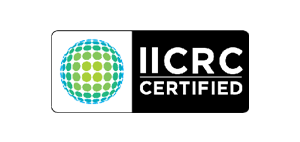Did you know fire damage can cause heat-related problems that need a detailed check? It’s important to know how to spot fire damage. This includes looking for signs like charring, ash, or melted surfaces. Color changes, like blackening or browning, also show how much damage there is.
But there’s more to fire damage than just what you see. Look for signs like blistering paint or warped surfaces. Soot, a black or brown powder, is another sign. Smoke damage leaves a sticky residue on walls and ceilings, changing color and texture.
Water damage from firefighting can also harm materials like drywall and wood. But stone and brick might just get mineral stains. Knowing these signs helps us deal with fire damage better.
Key Takeaways
- Fire damage can require extensive structural assessment due to heat-related issues.
- Visual indicators of fire damage include charring, ashing, peeling paint, and warped surfaces.
- Smoke damage varies in severity based on burn time and materials involved, leaving sticky residues.
- Water from firefighting efforts can cause additional staining and damage to building materials.
- Companies like ATI Restoration utilize specialized techniques and tools for effective smoke and soot removal.
Understanding Different Types of Fire Damage
Fire damage can be categorized based on the source and nature of the fire. Each type presents unique challenges. During a fire damage inspection, professionals often find various types of damage.
Smoke damage can affect walls, ceilings, and ventilation systems. It often leaves soot damage on surfaces. Wet smoke residue comes from low-heat fires and is sticky and smelly. Dry smoke residue, from high-temperature fires, is powdery and easy to clean.
Fires involving proteins, like those in cooking, produce a yellow-brown residue. This residue is strong and greasy, making it hard to clean. Cooking fires are common in commercial properties and pose a significant risk.
Synthetic fires, involving plastics and textiles, produce thick black smoke. They leave behind a smudgy residue. This type of fire damage is hard to address because of the toxic byproducts. Fires caused by poorly maintained electrical wiring also require extensive work.
Heat can cause physical and chemical changes in materials. This can weaken structural components like beams and walls. Heating unit fires, caused by poor installation and maintenance, are especially dangerous.
Water damage often follows firefighting efforts. The large amounts of water used can cause materials to warp or rot. This makes restoration more complicated, as hidden dangers like mold must be addressed.
It’s crucial to properly classify fire damage types for effective restoration. Fire damage inspection and remediation must consider all types. This ensures safety and normalcy in affected properties.
How do I spot fire damage?
When we look at fire damage, we see many things. The materials burned, how long and hot the fire was, and the air and building layout matter. Each of these can change how fire damage looks.
Wood often chars when exposed to flames. Metals melt, and plastics warp or dissolve in the heat. Glass cracks or shatters from extreme heat. These signs tell us about the fire’s strength and how long it burned.
Smoke is also key in understanding fire damage. It can get into places that look untouched, leaving soot and residues. EPA studies show smoke contains harmful stuff like carbon monoxide and benzene. These tiny particles can be dangerous if not cleaned up right.
A heat line is another important sign. It shows where the fire reached its highest point. This helps us figure out if damaged areas can be fixed. Smoke can also make things discolored and damaged, especially if touched with bare hands.
Fire types, based on oxygen levels, leave different residues. Low oxygen fires make wet, smoky residues. High oxygen fires leave dry residues that are easier to clean.
Humidity affects how materials absorb smoke odors. Wood, for example, absorbs odors more with humidity levels from 2% to 100% after a fire. Using HEPA vacuums and dry cleaning sponges helps clean up. Safety gear and the right cleaning agents are crucial to avoid more damage and fix soot and odors.
In short, understanding fire damage means knowing its signs and how it affects materials. The recovery process depends on spotting these signs and using the right cleaning and restoration methods.
Fire Damage Assessment and Restoration Process
The fire damage assessment starts with a detailed inspection of the property. Teams use tools like thermal cameras and moisture meters. These tools help find hidden damage and water damage from firefighting.
Experts then figure out how much damage there is. They look at damage from the fire itself and from smoke. After this, they make a plan to fix everything.
After the assessment, the restoration begins. First, they make sure the property is safe. They board up windows, install fences, and cover the roof with tarps.
Then, they clean up the fire damage. They vacuum soot, wipe surfaces, and use special cleaners. They also use air scrubbers and HEPA vacuums to get rid of soot and smoke.
Next, they work on getting rid of smoke smells. They use fogging and ozone treatments for this. After that, they fix any structural damage.
They replace damaged drywall, fix floors, and rebuild roofs if needed. They make sure everything is safe and meets building codes. They also try to save personal items by cleaning and repairing them.
The whole process can take weeks or months. It depends on how bad the fire and water damage were. The goal is to make the property safe and healthy again.
Restoring a property after a fire is a big job. It needs careful planning, safety, and skill. This way, homeowners can feel confident that their property is being taken care of.





